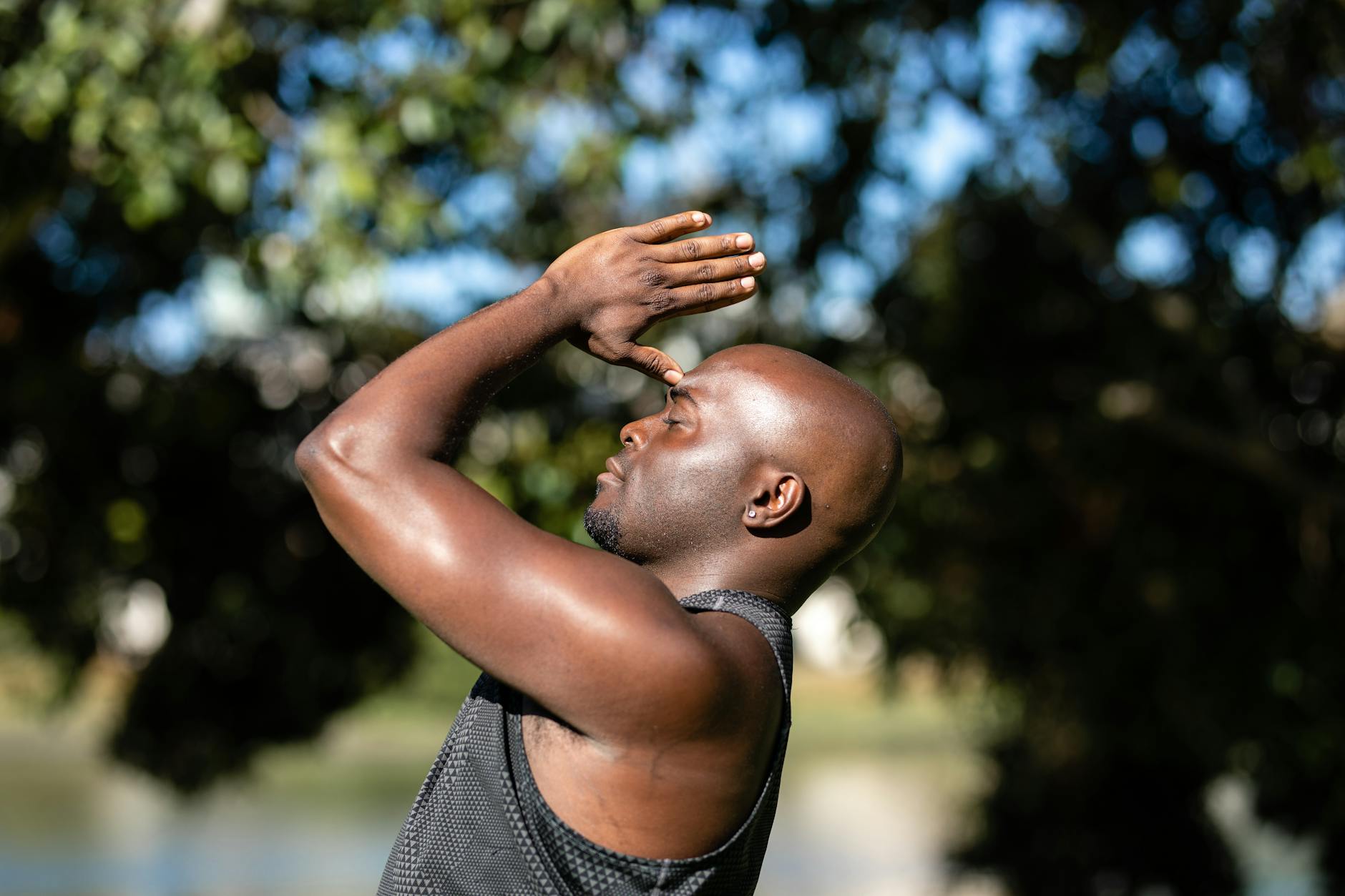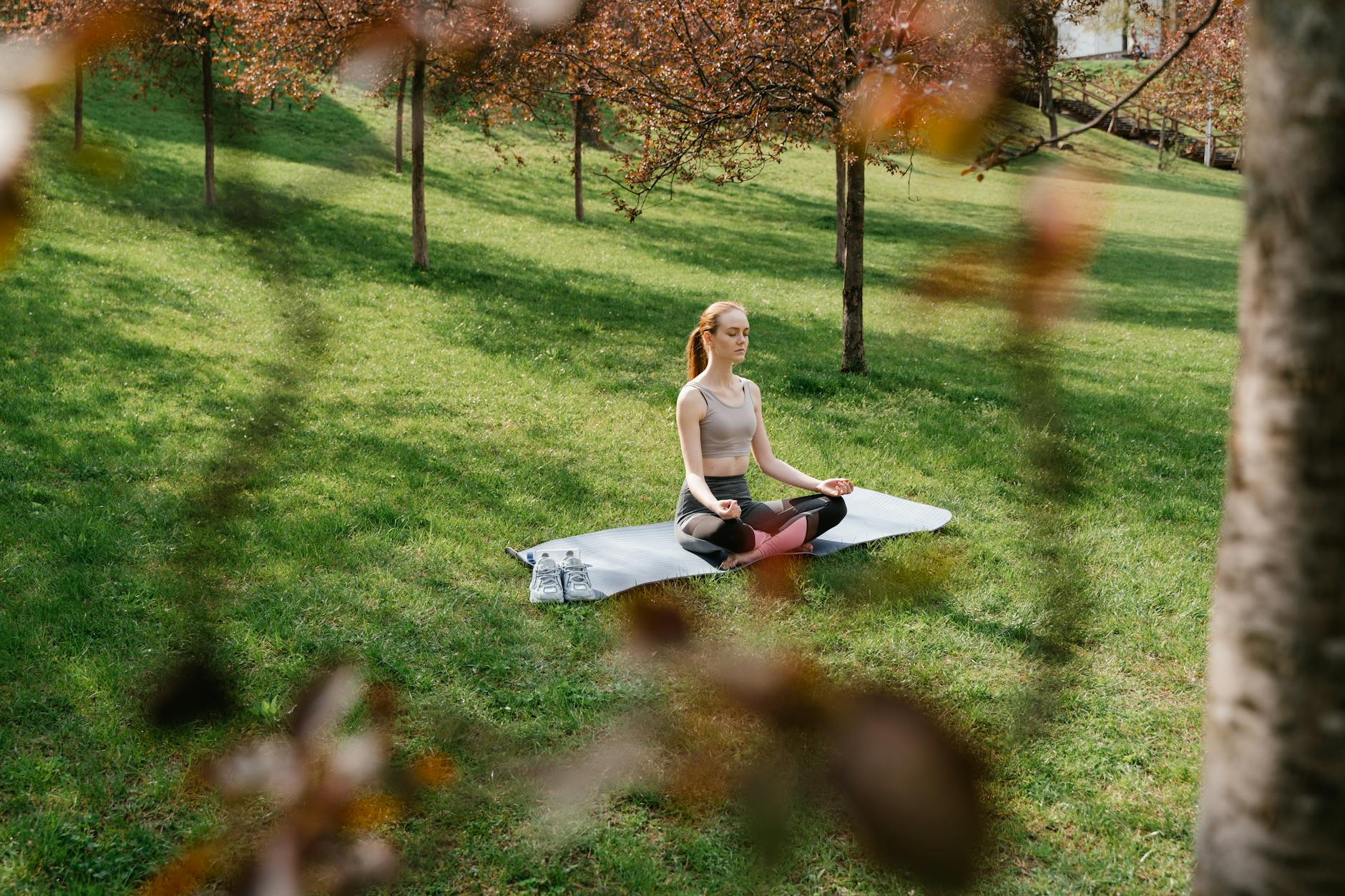Have you ever stopped to notice how fast life moves these days? It’s easy to feel like you’re just going through the motions, juggling tasks and chasing deadlines.
Mindful living brings a refreshing way to slow down and truly connect with yourself and the world around you.
It’s being present in the moment and appreciating what’s right in front of you—a habit that’ll not only reduce stress but also help you feel more balanced and centered.
Are you ready to embrace a calmer, more intentional life? Let’s explore how to make mindful living part of your daily life.
Mindful Living
Mindful living is not about becoming a completely different person or isolating yourself from the world.
It’s involves tuning into the present—letting go of distractions and being fully aware of what you’re doing, feeling, and thinking.
Mindful living is like pressing the pause button, helping us connect deeply with what truly matters.
What Does Mindful Living Mean?
Mindful living is being fully immersed in the present moment. It’s the opposite of living on autopilot. Have you ever been so caught up in what’s next that you forgot to appreciate what’s happening right now?
That’s what mindful living fixes. Slowing down and paying attention, helps you start to see life in clearer detail—the colors, the emotions, and even the thoughts you didn’t notice before.
It is like turning off the mental noise. When you practice mindful living, you take life one moment at a time. It’s not just meditation or yoga; it’s living this way in your everyday life.
From how you eat your breakfast to how you speak to others, it’s being intentional with every action.
Mindfulness and Intentional Living
Mindful living and intentional living go hand in hand. Mindfulness is the awareness of the present moment, while intentional living is about making choices guided by your values.
In other words, mindfulness keeps you focused, and intentional living gives direction to that focus.
For example, when you’re mindful, you might notice how a certain activity makes you anxious. Intentional living would then help you cut out that stressor or replace it with something better.
It’s like teamwork between your awareness and your willpower.
These practices lead to a more purposeful lifestyle. It’s no longer about rushing through your to-do list. Instead, it’s choosing to do fewer things—but do them well and with meaning.
Want to explore simple ways to feel more at peace in your skin? Read How To Feel Less Self-Conscious: 15 Easy Tips.
Simplicity, Gratitude, and Presence
Living mindfully often means simplifying your days. Why? Because the simpler life is, the easier it becomes to focus on what truly matters.
Instead of juggling dozens of meaningless tasks, mindful living encourages picking activities and relationships that truly nourish you.
Gratitude ties closely into this. Do you ever notice how appreciating small things—like the warmth of sunlight or a kind word—can instantly lift your mood?
That’s mindfulness in action, helping you savor ordinary moments that often go unnoticed. Gratitude journaling is a great way to practice, as it combines mindful observation with reflection.
Lastly, presence is the glue holding everything together. It’s being here instead of mentally jumping between the past and future.
Think of presence as the art of showing up—not just physically, but emotionally and mentally in every moment.
This could mean enjoying your coffee instead of scrolling through your phone or really listening during a conversation instead of crafting your next reply.
Photo by Ketut Subiyanto
The Benefits of Mindful Living
Mindful living is not just a buzzword—it’s a life changer. Through being present in the moment, you can boost your mental well-being, regulate your emotions, and even improve your physical health.
Let’s dig a little deeper into how mindfulness works its magic.
Mental Health Benefits
Mindfulness gives your brain the break it needs. It’s like clearing clutter from your mental attic.
Practicing mindfulness helps reduce anxiety, leaving you calmer and more focused. It quiets the mind and allows you to let go of random, stressful thoughts.
Here’s the kicker—mindfulness improves your focus too. Ever find it hard to stay on task because of a million little distractions?
Mindfulness rewires your brain to ignore what doesn’t matter and zoom in on what does.
Simple practices like mindful breathing or short meditation sessions can set you up for success.
For a deep dive into how mindfulness reduces anxiety, you can explore Stress Management Tools to Relieve Anxiety and Tension.
Emotional Benefits
Mindfulness is like a mirror for your emotions. Through taking time to notice how you feel instead of burying your emotions, you gain self-awareness.
It’s easier to understand why you’re upset or what triggers a bad mood. Once you recognize emotions as they arise, you can manage them better.
And let’s talk about resilience— mindfulness helps you bounce back after challenges. Instead of reacting in frustration or anger, mindfulness teaches you to pause and respond thoughtfully.
Imagine it as emotional training that makes you stronger over time.
Curious how journaling plays into emotional benefits? Check out 800+ Journal Prompts: The Ultimate Guide for Self-Discovery.
Photo by Tima Miroshnichenko
Physical Benefits
Your body benefits from mindfulness as much as your mind does. One of the biggest perks? It can improve your sleep quality.
Mindfulness lowers stress hormones, preparing your body for rest. This is perfect if you’re struggling with late-night overthinking.
Several people find incorporating a mindfulness-based routine helpful, like the bedtime practices covered in Evening Self-Care Routines to Reduce Stress and Improve Sleep.
Another big win is how it fights stress. Being mindful releases tension stored in your body. Even if it’s tight shoulders or a clenched jaw, mindfulness helps you relax.
Over the long term, reduced cortisol levels mean you’ll feel calmer with better overall health.
Mindfulness is not just a series of techniques—it transforms how you think, feel, and move through life, one moment at a time.
Steps to Create a Mindful Lifestyle
Creating a mindful lifestyle doesn’t require a big life overhaul. It’s involves introducing practical, easy-to-do steps that promote peace and presence in your day-to-day life.
Here are some simple ways to build mindfulness into your routine, one step at a time.
Start Small
Jumping into mindfulness with massive changes can feel overwhelming. Start with one or two small, daily habits. For example:
- Pause for 5 minutes each day to focus on your breathing.
- Eat one meal without distractions. Notice the taste, texture, and smell of your food.
- Use reminders, like sticky notes, to take a mindful moment—something as simple as saying, “I’m here right now.”
Remember, it’s not being perfect. It’s making room for these intentional moments in your busy schedule.
Morning Mindfulness Rituals
Mornings set the tone for the rest of your day. Starting with mindfulness can give you a calm, centered outlook. Try these easy rituals:
- Stretch or do light yoga right after waking up. This helps shake off sleep and ease your body into activity.
- Spend two minutes focusing on gratitude. Think of three things you’re thankful for before diving into your day.
- Sip your coffee or tea without any distractions. Just enjoy the warmth, aroma, and flavors.
Photo by Arina Krasnikova
Simple practices like these don’t take much effort but make a huge difference in how your day unfolds.
Evening Reflection Practices
Winding down mindfully helps you transition from a busy day to restful sleep. Here’s how you can do it:
- Journaling: Spend 10 minutes writing down your thoughts, feelings, or things you’re grateful for. Check out these journaling tips for self-care to get started.
- Light a candle or dim the lights for a cozy, calming ambiance.
- Reflect on one meaningful moment from your day. What made it special? This small celebration fosters gratitude.
Small, reflective practices like these can improve both your sleep and mindset for the following day.
Building a Routine
Consistency is key to incorporating mindfulness. Creating tiny, repeatable routines is easier than you may think:
- Tie mindfulness to existing habits: For example, take three deep breaths before sitting at your desk or stepping into a busy meeting.
- Mindful walking: Focus on how your feet touch the ground and the rhythm of your steps. It’s a great way to unwind during a lunch break.
- Digital breaks: Put your phone down for a couple of minutes every hour to refresh your focus and reduce overwhelm.
The goal is to weave mindfulness into what you already do daily. Even tiny, intentional moments add up over time.
Use Tools for Mindfulness
Tools can make your mindfulness journey easier to maintain:
- Journaling: It allows you to process emotions, reflect, and set intentions. Quick prompts like “How did I show kindness today?” can be a great start.
- Mindful walking: This simple activity clears mental fog while connecting you to the present moment. Whether it’s a stroll in nature or a walk around your block, notice the sights, sounds, and air around you.
Remember, your mindfulness toolbox should include what works best for you—pick and choose until you find what feels natural.
Key Habits for Mindful Living
Living mindfully doesn’t mean perfection, but instead making room for awareness in your daily life.
Want to feel less rushed and more content? Small habits, practiced regularly, can help transform your day-to-day experience.
Here are four key habits that you can start right now.
Simplify Your Life
Photo by MART PRODUCTION
Clutter—whether it’s physical, mental, or digital—drains your energy. Simplifying your life works like removing static from a radio, helping you focus on what truly matters. Start with these easy steps:
- Declutter one small area—your desk, your phone, or even your email inbox.
- Prioritize tasks for the day. Put your energy where it matters most.
- Limit multitasking. Try doing just one thing at a time for better results.
When distractions fade, you’ll find it easier to feel at ease. A simpler life invites space for calm and clarity.
Gratitude Practices
Feeling grateful shifts your mindset from “what’s wrong” to “what’s right”. It’s a subtle yet powerful way to live more mindfully. To bring gratitude into your life:
- Write down 3 things you’re grateful for each night.
- Thank someone regularly—whether in person or through a quick text.
- Reflect on your day and find moments of joy, no matter how small.
Practicing gratitude can boost hope and happiness in ways you might not imagine.
If you’re curious about more ways to shift your mindset, check out 8 Mindset Shifts to Boost Your Confidence.
Be Present in the Moment
Endless thoughts about the past or future can pull you away from the now. Being present isn’t necessarily meditating for an hour—it’s choosing to focus on this exact moment. Here are a few techniques to try:
- Take a deep breath. Remind yourself, “I’m here right now.”
- Notice your surroundings. What do you see, hear, or feel around you?
- Use simple mindfulness practices during routine tasks like washing dishes or brushing your teeth.
Even small efforts to stay grounded can reduce overthinking and bring more peace into your day.
Mindful Communication
So often, we listen just to reply. Mindful communication flips the script—it’s truly hearing and understanding others. This creates deeper connections and less miscommunication. Start here:
- Practice active listening. Pay attention without interrupting.
- Ask thoughtful questions to show you care.
- Pause before replying to check that your words align with your intentions.
How people respond to your mindful communication might surprise you. It’s a gift, both for you and for them.
How to Slow Down and Be Present
Life can feel like a never-ending race. Between work, family, and personal responsibilities, it’s easy to move through your day on autopilot.
However, slowing down and embracing the present moment can lead to a more fulfilling, mindful life.
Here’s how to recognize the signs of a rushed lifestyle and make meaningful changes.
Recognize Rushed Lifestyle Signs
Do you ever feel like the day is a blur and you can’t catch your breath? That’s a telltale sign of rushing. Recognizing when you’re stuck in overdrive is important if you want to reclaim control of your time and focus.
Here are some easy-to-spot signs that you might be living too fast:
- Constant multitasking, but nothing feels accomplished.
- Scrolling your phone aimlessly even during short breaks.
- Feeling tense, with tight shoulders or a racing heartbeat.
- Forgetting what you just ate or conversations you’ve had.
When these moments pile up, it’s time to pause. This isn’t just about stress; it’s also missing out on life itself. Slowing down could be as simple as stopping to take three deep breaths or choosing a single task to focus on.
Photo by Monstera Production
Create Pauses in Your Day
A pause might sound simple enough, but how often do you honestly stop and give yourself a break?
Even if you have five minutes or an hour, mindful pauses aren’t wasting time—they’re about resetting and refreshing your mind.
Here’s how you can add mindful breaks to your routine:
- Practice mindful breathing: Take five deep breaths, focusing on the air entering and leaving your lungs.
- Sip a cup of tea or coffee without distractions. Listen to the sounds around you or just savor each sip.
- Take a quick nature break. A short walk outdoors works wonders for clarity and calmness.
If you’re ready for a deeper reset, guided meditation can help. Apps like Headspace or Calm can walk you through brief, effective sessions.
Focus on One Thing at a Time
Multitasking might seem efficient, but it often leaves you feeling drained, unfocused, and unsatisfied.
The antidote to constant juggling? Single-tasking. Focusing on one task at a time not only enhances productivity but also makes the task itself more enjoyable.
Here’s how to embrace single-tasking:
- Start small—pick one daily activity like eating, and do it without distractions.
- Use a timer. Dedicate 20 to 30 minutes to just one responsibility.
- Make a “to-don’t” list. List distractions to avoid (social media, unnecessary chores) during focused hours.
Single-tasking trains your brain to stay in the moment. It is like a workout for mindfulness. To take your practice further, explore How To Slow Down In Life.
Through stepping out of the rushed mindset, embracing pauses, and committing to focus, you’ll build a life where presence becomes second nature.
The Role of Minimalism in Mindful Living
Minimalism and mindfulness often go hand in hand, providing us with strategies to simplify not only our surroundings but also our minds.
Both encourage intentionality—minimalism through our possessions and mindfulness through our thoughts and actions. Together, they create a lifestyle of clarity, lightness, and purpose.
Photo by Ron Lach
How Minimalism Complements Mindfulness
Minimalism and mindfulness both call for deliberate choices, even if it’s about what you bring into your home or how you spend your time.
Think about it—how often does excessive clutter in your space lead to a cluttered mind? Minimalism clears out unnecessary distractions, preparing the stage for mindfulness and focus.
When we embrace minimalism, we’re consciously reducing. This practice complements mindfulness, which emphasizes awareness and presence.
Through removing the “extras,” minimalism creates room for appreciation—allowing you to focus on what truly holds value, both physically and emotionally. It’s like clearing static from a radio so you can hear the music clearly.
Decluttering for Mental Clarity
Decluttering is not just making your home look nice—it’s a tool to reduce stress and open up mental space. When your surroundings are clean and intentional, your mind follows.
Here’s a step-by-step guide to help you declutter:
- Start Small: Begin with a single drawer or one shelf. Make it manageable.
- Sort into Categories: Create piles for “keep,” “donate,” and “discard.”
- Focus on Utility and Joy: Only keep items that serve a purpose or bring happiness.
- Maintain Regularly: Make decluttering a monthly habit to avoid buildup.
- Enjoy the Empty Space: Don’t feel the need to fill every corner—sometimes, blank space can be calming.
Emotional Benefits of Letting Go
You’ve probably heard the phrase “let it go” a million times, but have you ever actually put it into practice, physically and emotionally?
The truth is, holding onto meaningless possessions often mirrors the baggage we carry in our heads. Through decluttering, you’re sending a message to yourself—it’s okay to release things that don’t serve you anymore.
Emotionally, letting go reduces overwhelm. It creates a sense of liberation where you stop being weighed down by the what-ifs and the maybes.
Suddenly, it’s easier to focus on the present. With fewer distractions, both physical and emotional, you’ll notice more peace in your day-to-day life.
In addition to relieving mental stress, living lighter builds self-confidence. Why? Because you’re proving to yourself that you control your things—they don’t control you.
If this resonates, you might also like Mindfulness = Minimalism, which explores more emotional connections between the two philosophies.
Through integrating the principles of minimalism, we create a better foundation for mindful living.
Though letting go is a process, the benefits—mental clarity, emotional peace, and purposeful living—are well worth the effort.
Practicing Gratitude for a Mindful Life
Gratitude is not just saying “thank you.” It’s slowing down and truly appreciating life’s small joys.
When you practice gratitude regularly, it naturally invites mindfulness into your daily life.
Let’s uncover why gratitude is key, how to make it a habit, and some creative ways to keep the gratitude alive.
Why Gratitude is a Cornerstone
Gratitude makes you stop and notice what’s good right now. Instead of being caught in worries about what’s next, you shift your focus to the present moment.
Wondering how this works? Gratitude teaches the brain to look for positives—things to celebrate rather than worry about.
Think of gratitude as a lens that sharpens what’s meaningful. It encourages mindfulness by helping you live in this moment.
When you appreciate a steaming cup of coffee or enjoy the sound of laughter, you’re staying grounded in the “now.”
These small moments train your mind to break free from autopilot living.
If you’re curious about how gratitude supports emotional growth, explore How to Manifest Happiness: A 30-Day Challenge for daily tips.
Integrating Gratitude into Daily Life
Sprinkling gratitude into your routine doesn’t have to be hard. You can start small, and over time, it becomes second nature. Here are simple ways to practice gratitude that anyone can try:
- Gratitude Journaling: Jot down three things you’re grateful for every night. This trains your brain to seek out positives.
- Verbal Acknowledgments: Thank people for small gestures. A heartfelt “I appreciate you” can go a long way.
- Daily Affirmations: Start the morning with a phrase like, “Today, I’m thankful for the chance to start fresh.”
Integrating gratitude is about consistency. The goal isn’t to tick a “to-do” box but to slowly shift your perspective toward recognizing life’s beauty.
Gratitude Jars
Ever heard of a gratitude jar? It’s a fun way to keep gratitude alive and visual! Here’s how it works:
- Grab a jar, any jar.
- Keep small slips of paper nearby.
- Each time something warms your heart—a kind word, a comfy sweater, or even a sunny day—write it down and drop it in.
Over time, your jar fills up with heartfelt moments.
On tough days, revisiting these notes is like opening a vault of happiness. Families, especially, can bond over this practice by sharing what everyone wrote at the end of the month.
Practicing gratitude is a simple yet powerful way to bring more mindfulness into your life.
From keeping a gratitude journal to starting a gratitude jar, it’s about cherishing where you are now. And slowly but surely, it transforms your entire outlook on life.
Decluttering Your Mind Through Mindfulness
Are you constantly juggling thoughts, worries, and distractions that seem to drain your mental energy? Decluttering your mind is just as important as tidying up your physical space.
This is where mindfulness comes in. Through practicing mindfulness, you can calm mental chaos and refocus on what truly matters, one step at a time.
Impact of Mental Clutter
Mental clutter, just like physical clutter, affects your ability to focus and thrive.
Think of your brain as a browser with too many tabs open—eventually, it slows to a crawl.
Persistent worries, endless to-do lists, and overthinking make it hard to concentrate, leaving you tired and overwhelmed.
Signs of mental clutter may include trouble staying present, racing thoughts, and forgetfulness. Over time, this buildup can lead to anxiety or poor sleep.
The good news? You can break free. Taking small, mindful actions every day will help clear that mental fog and restore your focus.
Need help managing overwhelm? Check out From Fear to Freedom: How To Deal With Uncertainty for tips on creating a calmer mindset.
Strategies to Clear Mental Clutter
Mindful practices act like spring cleaning for your mind. They help you let go of unnecessary thoughts and focus on what truly matters.
Here are a few simple techniques:
- Mindful Breathing: Take slow, deep breaths, focusing on the air entering and leaving your body. It’s quick and surprisingly effective.
- Journaling: Writing your thoughts down can free up mental space. It’s like emptying a cluttered closet.
- Guided Meditation: Beginners can explore mindfulness apps like Declutter The Mind for bite-sized meditations.
Every moment spent in mindfulness adds another piece to your mental puzzle, helping create a calmer, clearer picture. Experiment with different techniques to see which ones resonate with you.
If you’re interested in mindful decluttering for both home and mind, read Declutter Your Home and Your Mind: The Path to Mental Clarity.
Setting Daily Intentions
Think of daily intentions as a North Star for your day—they help bring focus and purpose. Instead of being carried away by chaotic schedules, intentions give you clarity and direction.
Here’s how to set intentions every morning:
- Take 2 minutes of stillness: Sit quietly, breathe deeply, and ask yourself, “What matters most today?”
- Focus on actions, not outcomes: Instead of saying, “I want to complete my work,” shift to, “I’ll approach my work with focus and clarity.”
- Write it down: Whether in a journal or on a sticky note, seeing your intentions can reinforce your goal throughout the day.
Through practicing this simple habit, you’ll start each day with clear focus, which is key to living mindfully.
Photo by MART PRODUCTION
When you declutter your mind and set clear, mindful intentions each day, life feels a little lighter, and a lot more manageable.
Bringing Mindfulness Into Everyday Tasks
Integrating mindfulness into daily life is not carving out hours for meditation. It’s all about staying present and aware of the here and now, even during routine chores or errands.
Everyday moments can become opportunities for mindfulness with just a few simple adjustments.
Mindfulness in Routine Activities
Photo by Kampus Production
You don’t need a special setting to practice mindfulness. Some of the best opportunities come during everyday moments, like cooking dinner or commuting.
These seemingly mundane tasks can be transformed into moments of focused awareness.
While Cooking: Instead of rushing to finish, try slowing down and noticing the details. Pay attention to the textures, smells, or sizzling sounds.
Feel the rhythm of chopping vegetables or the heat from the stovetop. This intentional focus turns cooking into an almost meditative practice.
During Your Commute: Leave distractions behind. If you’re in a car, focus on the sensations—the seat under you, your hands on the wheel.
For those on public transportation or walking, take a moment to observe your surroundings. Notice the colors, how the air feels, or even the sound of footsteps.
The Importance of Awareness
Being fully present isn’t just for moments of stillness. It’s about bringing awareness to everything you do—even the everyday stuff you might overlook.
is this so important? Because these little moments make up most of your life.
When you’re present, you notice things you’d typically miss: How does the ground feel beneath your feet? What’s the rhythm of your breath? These observations ground you in reality instead of letting your thoughts wander to the past or future.
Think of it as sharpening your mental focus. Being aware helps reduce stress and enhances your quality of life.
Mindfulness practices can have a calming effect, enhancing both mental and physical health.
Through practicing awareness, even “boring” parts of your routine can become enriching and fulfilling experiences.
Final Thoughts
Mindful living is about finding peace in the present moment. It encourages you to focus on what truly matters, helping to ease stress and bring clarity to your life.
By starting small—with just one daily mindful habit—you’re already setting the foundation for a more balanced and intentional life.
The transformation won’t happen overnight, but each mindful decision adds up over time.
Even if it’s savoring your morning coffee, focusing on a single task, or simply breathing deeply, these moments create a calmer mindset.
Curious about more practical ways to get started? Explore these Evening Self-Care Routines to Reduce Stress and Improve Sleep for ideas that align with mindfulness.
For additional daily practices rooted in mindfulness, check out 125 Positive Affirmations for Mental Strength and Courage.
If you’re seeking more inspiration on meaningful ways to integrate mindfulness, “Mindful Living: Cultivating Mindfulness in Everyday Life” on Mindfulness.com explains simple yet powerful practices.
Ready to start your mindfulness journey? Begin today with simple steps, and subscribe for more tips to nurture a peaceful, fulfilling life!











